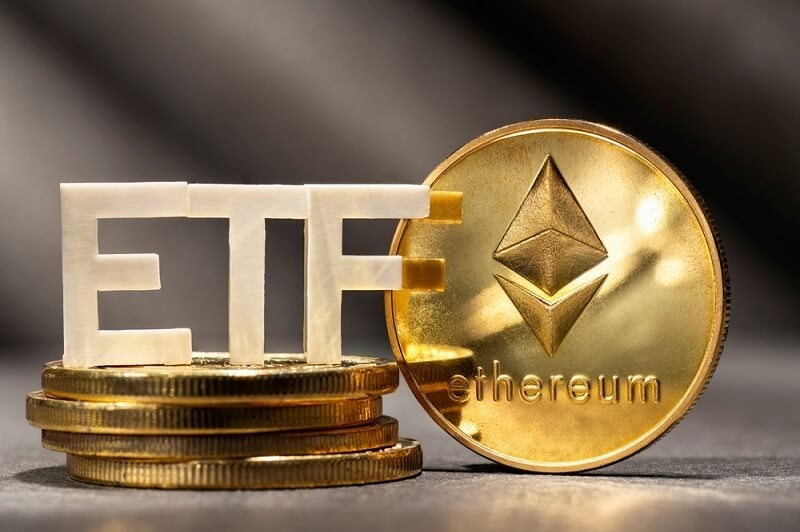
Exchange-traded funds, or ETFs, have changed how everyday investors experience and access the market. But what are ETFs, and why are they popular with new and experienced investors?
ETFs are a hybrid of the best features of mutual funds and individual stocks. They provide investment exposure to a variety of assets while providing the ability to trade shares of the ETF on an exchange similar to a stock. Whether you're developing a retirement portfolio, want to earn passive income, or want to diversify your investment, understanding what ETFs are will help you make informed investment decisions.
This article introduces exchange-traded funds (ETFs) and how they work, compares ETFs and mutual funds, reviews the types of ETFs, and discusses how they produce income.
An Exchange-Traded Fund (ETF) is an investment vehicle that allows many investors to "pool" their money to invest in various assets, including stocks, bonds, commodities, or currencies.
ETFs differ from mutual funds because they trade on a stock exchange throughout the trading day, just like individual companies. This unique quality of being immediately tradable and diversified can attract novice and professional investors.
When investors purchase shares of an ETF, they buy a share of an underlying basket of securities. For example, an ETF that tracks the S&P 500 will hold all the stocks in the index. So, how does an ETF work?
ETFs have a unique method of creating and redeeming shares, which is called an "in-kind" creation and redemption process. ETF providers have Authorized Participants (APs) to create and redeem ETF shares.
Authorized participants will take a basket of securities to create new shares of an ETF and will be provided ETF shares to sell on the exchange.
This process allows ETFs to have proper liquidity, and the price of ETFs trading on exchanges will stay in line with the underlying holdings of the ETF.
Once ETF shares are created, they will trade on the stock exchange. The price of ETF shares will move throughout the day based on market supply and demand. However, it will stay relatively close to the fund's underlying holdings' Net Asset Value (NAV).
At first glance, ETFs and mutual funds appear similar. Both offer diversified exposure and are often managed by professionals. However, their operational differences are significant.
| Feature | ETFs | Mutual Funds |
| Trading | Throughout the day | Once per day (after market close) |
| Price Determination | Market price | Based on NAV at day’s end |
| Minimum Investment | One share | Often a few hundred or thousand rupees/dollars |
| Fees | Typically lower | Typically higher |
| Tax Efficiency | More tax-efficient due to in-kind redemption | Less efficient |
ETFs provide greater flexibility and cost-efficiency, making them especially attractive to DIY investors and those pursuing passive income strategies.
If you're asking yourself how ETFs generate revenue, there are three primary channels:
When the value of the ETF's underlying securities increases, so does the value of the ETF itself. When ETF shares are sold at a price greater than the purchase price, that price difference represents capital gains.
Many ETFs distribute dividends received from their securities (especially stock ETFs). This provides an investor with passive income and a frequent, steady stream of passive income in the case of dividend ETFs.
Bond ETFs and other fixed-income ETFs accrue income from interest and distribute that income to investors regularly.
Ultimately, ETFs produce investors' returns through price appreciation and income distribution, making them attractive to both growth- and income-focused investors.

One of the most significant benefits of ETF investing is the sheer number of funds available. Here is a complete list of the most popular types of ETFs that the average novice investor can use to get started:
These ETFs apply to a group of stocks, whether that is sectors (i.e., healthcare, technology) or regions (i.e., emerging markets). Great ETFs are stock ETFs because they allow for creating a diversified portfolio (across multiple companies).
These ETFs contain U.S. government or corporate bonds—a good option for investors seeking lower volatility with steady income.
These ETFs track the major indexes generally used for comparison (i.e., S&P 500 or Nifty 50). Ideal for the long-term, steady, passive investor.
These ETFs focus on stocks that pay regular dividends to investors. Perfect for any investor seeking a return on investment through passive income, as dividends are returned to the investor in cash rather than stocks.
Like stock and bond ETFs, commodity ETFs allow you to invest in physical commodities like oil, gold, wheat, etc. For inflation hedging or diversification of investment portfolios.
This includes ETFs that invest based on wanted themes (core green energy companies, artificial intelligence, and blockchains). Higher risk than traditional ETFs, but has the potential for higher gains.
If a beginner is ever to invest in ETFs, index and diversified stock ETFs are generally the best place to start, as they have established low fees and significantly diversified investments.
ETFs are particularly suited for investors who aim to build wealth passively over time. Here’s how:
ETFs can be bought through robo-advisors or SIPs (Systematic Investment Plans), allowing for automated investing with minimal effort.
Use a Dividend Reinvestment Plan (DRIP) to reinvest earnings, compounding your returns without manual involvement.
Once you build a diversified ETF portfolio, little ongoing maintenance is required. This hands-off approach is ideal for passive investors.
Low expense ratios mean more of your money stays invested, working to grow your portfolio steadily.
Selecting the right mix of dividend, bond, and index ETFs can create a growing passive income stream.
ETFs are a desirable alternative because of their many advantages:
Because of these characteristics, ETFs are an effective tool for both long-term investing and tactical short-term trading.
However, there are some drawbacks to ETFs:
Like stocks, ETFs carry the risk of market fluctuations. If the underlying stocks in a stock ETF decline, the ETF will decline.
A few niche ETFs have relatively low trading volume, which may make it difficult to sell your position promptly and at a reasonable price.
Sometimes, the ETF performance may not precisely match its tracking index. Fees and fund structure can cause this.
Too many overlapping ETFs may dilute your returns while also adding unnecessary complexity.
Before investing in ETFs, you can continually evaluate your risk tolerance and investment goals.
Getting started with ETFs is easier than you think. Here's a step-by-step guide:
Choose a reputable brokerage platform that offers commission-free ETF trading and intuitive tools.
Could you decide whether your goal is growth, income, or capital preservation?
Start with broad-market index ETFs or diversified stock ETFs. Check the expense ratio, underlying index, and historical performance.
Use SIPs or automate investments monthly. Dollar-cost averaging helps reduce the impact of market volatility.
Check your asset allocation periodically, but avoid reacting emotionally to short-term market swings.
Understanding what exchange-traded funds (ETFs) are and how they work is the first step to becoming a better investor. ETFs are simple, flexible, and efficient—three beneficial qualities that help groups develop strategies to invest in a more modern way.
Whether you're comparing ETFs vs mutual funds explained, curious about how ETFs make money, or researching types of ETFs for beginners, one thing is clear: ETFs are flexible, accessible, and good at building passive income over the long haul.
For anyone wanting to take charge of their financial future with less effort and more potential, using ETFs for passive income could be one of your most empowering choices.
This content was created by AI